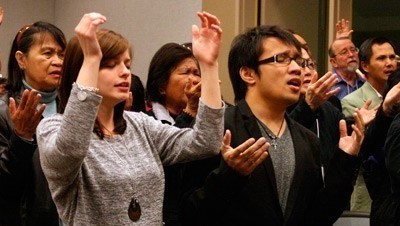
The Statues Gasped: A testimony of being healed from childhood sexual abuse alongside the experience of facilitating healing. Sarah Chapman and Anna. 2020 Privately published but available from Amazon.
I sometimes wonder if my blog readers are curious about my background in the Church which has led to my concern for power and abuse issues. Those who have followed this blog a long time will know that I write, not as an abuse survivor but as someone who wants to help such individuals to explore ways to find healing in one or other of its many manifestations. In this I can draw on my personal experience of clerical ministry over a long period. In particular, I write as one formerly quite actively involved in the Church’s healing ministry. Having been exposed to this ministry, I am fully aware that it sometimes has a shadow side. The Church can, while offering wholeness, be a place of harm. Much of what is written in this blog is, to a certain extent, an exploration of this terrifying paradox. The highest and the best, the Christian good news, can sometimes be quickly twisted to become the occasion of evil, deep pain and horrifying suffering.
My background experience within the Church’s ministry of healing and deliverance has given me some sensitivity to the needs of the abused. One of the issues that constantly come up in the pages of this blog is the way that survivors can be re-abused through the wrong kinds of intervention and support. An abuse event is not just a one-off experience of pain, it can have terrible life-long consequences which affect relationships as well as emotional and physical health. Few survivors receive the highly skilled interventions from professional therapists or gifted spiritual counsellors that they need. Alongside the difficult journey to health, which may be offered by psychotherapy, survivors are also struggling to find some kind of justice. Having to meet the demands of these two strivings, the search for therapeutic healing and justice, it is hardly surprising that many victims of abuse fall by the wayside and become invisible. Public survivors, the ones representing the invisible victims, have to be courageous and strong. The journey they have to endure is hard and exhausting.
Just recently I was sent a copy of a book, The Statues Gasped, which deals with the topic of healing for abuse survivors. It takes the form of a narrative about the help offered to an abuse survivor by a Christian priest/therapist, Sarah Chapman. In the narrative, the survivor, called Anna, slowly and painfully finds her way to wholeness aided by the resources of skilful counselling and the Christian faith. Anna is in the process of recovery from the life-changing effect of sexual abuse perpetrated on her as a small child and teenager by her own father. The help that Sarah Chapman is able to offer her is both spiritual and therapeutic. The insights that are shared in the book by both therapist and survivor help us to have a fuller insight into the process of healing from abuse. It is costly work both for the survivor and her therapist.
Anna’s abuse experience at the hands of her father was an act of gross betrayal by both her parents. Neither seemed to understand the need for the growing child to feel safe and protected. As the result of the massive psychological traumas which went on throughout her childhood, Anna developed Dissociative Identity Disorder (DID). DID is one of those complex disorders encountered in the text-books. Here, through Sarah’s description, it become possible to understand something of how it operates. At the same time we realise that it may probably be commoner that we had thought. For the purpose of our understanding here, DID is a disorder that can occur as the result of the mind trying to deal with a highly stressful event. This might be something like a sexual assault. Because the trauma cannot be acknowledged or processed by the conscious mind, particularly when it lacks maturity, the memory of it, for the sake of survival, is sealed off. It remains buried where it does not have to impinge on day to day awareness. The problem for the abused person is that these fragmented parts of the personality, each containing traumatic memories, can suddenly be activated or triggered into conscious awareness without warning. In Anna’s case there was, among others, a six-year-old dissociated personality. This fragmented part of her personality would sometimes appear, complete with the understanding and sense of terror that had become frozen by Anna at that age. Sarah quotes from the leading writer on Trauma, Van der Kolk: ‘experiences cause people to become hopelessly stuck in the past.’ Friends and would-be helpers had to be prepared for these sudden personality shifts. Anna was carrying several of these unintegrated personality fragments from her past, from an infant self up to a teenager. Each one of the parts or fragments of her personality had a frozen memory of abuse. The healing task, to put it at its simplest, was for the therapist patiently to connect with each one of these split-off personalities. Then they each had to be loved and nurtured back into the core adult personality. Sarah, in short, was offering appropriate therapy to every one of the dissociated fragments of Anna’s personality. The toddler in Anna needed security, the six year old reassurance and the teenager answers to the questions around growing up. This required a great deal of time as well as a great deal of skill. The healing love that was brought into Anna’s situation was not just what Sarah, as her therapist, could offer her, but there was a sharing with every part of her with the love of Jesus himself. In this way the healing process was a spiritual as well as a psychotherapeutic process.
The book is helpful to readers because it goes into considerable but non-technical detail about this process of trauma and the way that dissociated states can arise. After reading the account I realised that perhaps I too had encountered this disorder without having realised what it was. Sudden uncontrollable bursts of emotion in a stressful situation may perhaps indicate a moment of regression to a dissociated part of the personality. There is so much to be understood about the aftermath of abuse and trauma in general. Whatever the extent of DID in society, it is important for any of those involved in the care of the abused at least to be aware of its existence. The importance of the book is then not only to make us aware of a distressing outcome of abuse but also to realise that there are possible grounds for hope. Christian healing and psychotherapeutic intervention can offer a path back to healing.
This book is, I believe. the very first written by a Christian professional that relates DID to childhood sexual abuse. As we would expect, the book explores one important theological theme that occurs in every abuse scenario. How does one forgive? The exploration of this theme is dealt with wisely and realistically. There is no ‘forgive and forget’ playbook. There is rather a psychotherapeutically informed recognition of the costs involved in making this possible. For Christians, the reality of forgiveness will reach right across the boundaries between faith and good psychotherapy. Sarah handles this theme with care and sensitivity.
One of the remarkable aspects of the book is the way that Anna and Sarah seem genuine partners in the path to healing. It is written as a journey of mutual discovery and one feels that their common faith allows them to occupy a place which we may call spiritual intimacy. This is an expression that I coined for myself some thirty years ago when I was engaged in an active parish healing ministry with my wife. The role of prayer brings the ‘healer’ and the one seeking help into a distinctive partnership. Sarah is alongside Anna as a spiritual companion. She also has the wisdom to show how Anna herself has to do much of the hard work of prayerful meditation and reflection. Much of this is done, we discover, as an anonymous member of a cathedral congregation. Anna’s own written account allows us to share this side of the story. Quiet private reflection on the words of worship and prayer feed the soul and become a powerful tool in the journey towards healing.
In this powerful testimony of Christian healing, there are no miracles or short cuts. Rather this is a story that fully acknowledges the pain, the catastrophe and destructiveness of sexual abuse. Nevertheless, it points us to a realistic path to healing. In describing this path we are taught several things. In the first place through the description of DID we are shown what needs to be done for some survivors. Like Anna, they are, maybe, carrying life-long trauma, resulting in a fragmentation of the personality and massive inner disturbance. The inner child, or shut off fragments of neglected personality, need to be reached and integrated into the core adult personality by the loving skilled intervention of the therapist, Christian or otherwise.
Having now read this book, I have a new appreciation of the potential needs of survivors who may suffer in this way. While the book I have been commending does not qualify any of us to be therapists ourselves, it does raise our horizons of understanding of the task that may need to be followed. Everyone who has any dealings with survivors should read this beautiful book. It describes the hard work of healing but it also indicates that there is hope. That hope does in part lie within the resources offered to us in the Christian faith.









